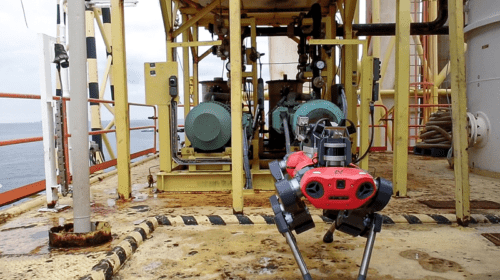Oil workers in some states – North Dakota among them – are going through a job transition phase. As they discover declining career opportunities, chances to get reskilled as wind turbine technicians and solar installers are becoming available. Here’s a closer look at this emerging trend.
An Oil and Gas Consulting Company Pursues a New Business Angle
Some wind industry efforts from the oil and gas sector arise from workforce retention needs. NESET, a North Dakota consulting company for the oil and gas sector, has recently assessed how the wind energy industry could encourage highly skilled oil field employees to stay in the state despite a downturn partially brought about by COVID-19.
The company recently received $48,265 worth of grant money from a North Dakota Department of Commerce initiative. The North Dakota Smart Restart Technical Skills Training Grant supports accelerated retraining for workforces.
Students Get Trained in a Matter of Months
When someone considers embarking on a job transition journey, one of the top concerns on their mind likely relates to how long it will take to get trained for a new type of work. While that’s understandable, oil field workers interested in learning to service wind turbines may find the process is quicker than they expect.
The NESET team was already working with Lake Region State College to set up an accelerated wind academy program before getting any grant money.
Kathleen Neset, NESET’s president, notes, “We have an area here in Northwestern North Dakota that is rich in schooled labor but, unfortunately, many of our fellow oil field workers have recently lost their jobs due to current events.” The training program should give them new employment opportunities. It lasts for 14 weeks, and students are fully qualified to work on wind turbines afterward. The first term accommodated up to 16 learners.
NESET Will Maintain Its Presence in Oil and Gas
Joe Griffith, NESET’s operations manager, was careful to clarify that this new push into wind power does not mean the company will depart from its oil and gas roots.
“We would not want anyone to forget that, at this moment, 100 percent of our revenue comes from oil and gas,” Griffith states. “But it doesn’t mean we cannot help another part of the energy sector.” He also mentions how wind turbine work is not so different from what oil field workers already know how to do.
“We already have lease operators who do something very similar to what wind technicians do,” Griffith says. “That’s being in pickups with specific tools for monitoring and repairing production wells. That is what a wind tech would do as well. Go out in a NESET truck and monitor the wind turbines for any faults.”
A properly functioning turbine turns the wind’s kinetic energy into electricity. As the blades spin, they move an internal rotor shaft. That component moves a series of gears to produce clean electricity. However, lightning strikes, power regulator problems and material faults can cause issues. Once a turbine technician knows what to look for and how to address matters, they’re well-equipped to keep wind turbines operating properly.
Highlighting the Job Transition Options
When oil workers unexpectedly find themselves out of work, many feel unsure where to turn for other possibilities. Some renewable energy companies specifically target people from the oil and gas sectors ready for new opportunities.
Key Capture Energy, which specializes in battery development, is one of them. Jeff Bishop, the company’s CEO, posted LinkedIn content to tell oil and gas workers that renewable energy jobs in Texas were open for them to take. He reportedly received about 200 applications within two months of publishing the callout.
Elsewhere, a company called Workrise offers a platform that connects workforce members with entities that require their skills. It started as RigUp, offering a tool that let oil and gas companies order anything they needed, from workers to equipment. The founders quickly identified skilled labor as the top request and began solely investing in workforce development. As of March 2021, it placed 26,000 people in jobs, with many assignments given in the past year.
Workrise is headquartered in Texas, but often sends workers to other states, including North Dakota. Training is often part of the employee preparation process. People such as electricians have skills that easily transfer to renewable energy jobs. However, the switch is not as smooth for those who formerly handled work like drilling and pipefitting.
Alfred Burt worked in the oil industry for 26 years before losing his job during the pandemic. A Workrise recruiter asked him to consider wind sector work. Burt was open to it and now earns $20 an hour in a role where he runs lines to raise and lower turbine blades. “Wind’s not bad. Lots of outdoor work. There’s not a lot of difference with oil and gas,” he concludes.
Switching to Another Employer Not Always Required
As someone trained for oil field work, you may initially think that pursuing a renewable energy job requires parting ways with one employer and coming on board with another. However, that’s not necessarily the case. Some businesses that started in the oil industry keep engaging in that work while simultaneously taking renewable energy jobs.
Native Brother Services is a North Dakota oil company that recently pivoted to the renewable energy sector. So far, it’s specializing in solar panel installation. Company owner Esley Thorton, Jr. mentioned that the business is still open for oil industry work and ready to engage in it.
However, the shift toward solar is starting to pay off. As of August 2021, Thorton had jobs booked into October. He also said multiple offers for new work come in each week, and the five-person crew currently handling those assignments has had to pass on some of them to keep its workload manageable.
Coulee Luger is a 30-year-old employee who had worked in various North Dakota oil field jobs since graduating from high school before changing his career path to become a solar installer. Luger is a Native American and a member of the Mandan, Hidatsa and Arikara Nation. He and Thorton have been talking to Tribal government officials about the possibility of equipping some of the tribally owned buildings in the reservation’s capital of New Town this autumn.
Renewable Energy Offers Chances for a Job Transition
Losing one’s job or realizing that could happen soon because of industrywide challenges can be a harrowing experience. These examples show that careers and renewables could help oil industry workers start over. Many have decades of experience extracting oil for energy purposes. These new positions involve power generation in different ways and offer personal growth and expanded opportunities.
Headline photo courtesy of Pexels.
Emily Newton is the Editor-in-Chief of Revolutionized, an online magazine discussing the latest industry innovations and trends.
Oil and gas operations are commonly found in remote locations far from company headquarters. Now, it's possible to monitor pump operations, collate and analyze seismic data, and track employees around the world from almost anywhere. Whether employees are in the office or in the field, the internet and related applications enable a greater multidirectional flow of information – and control – than ever before.












